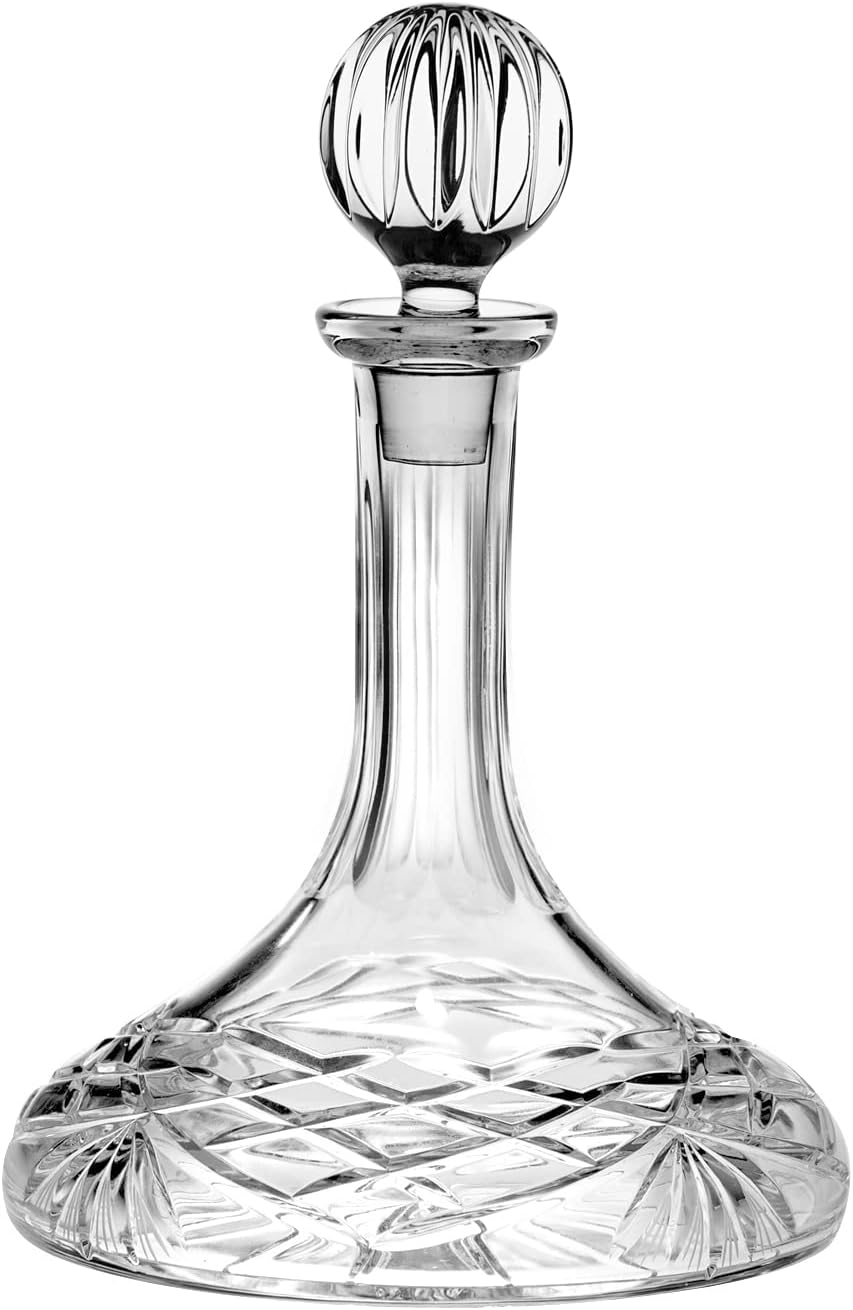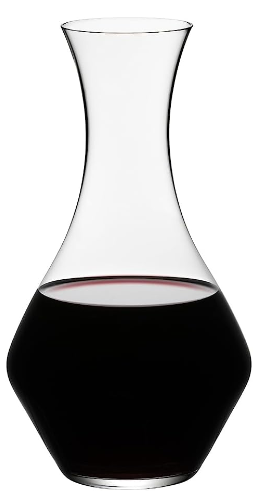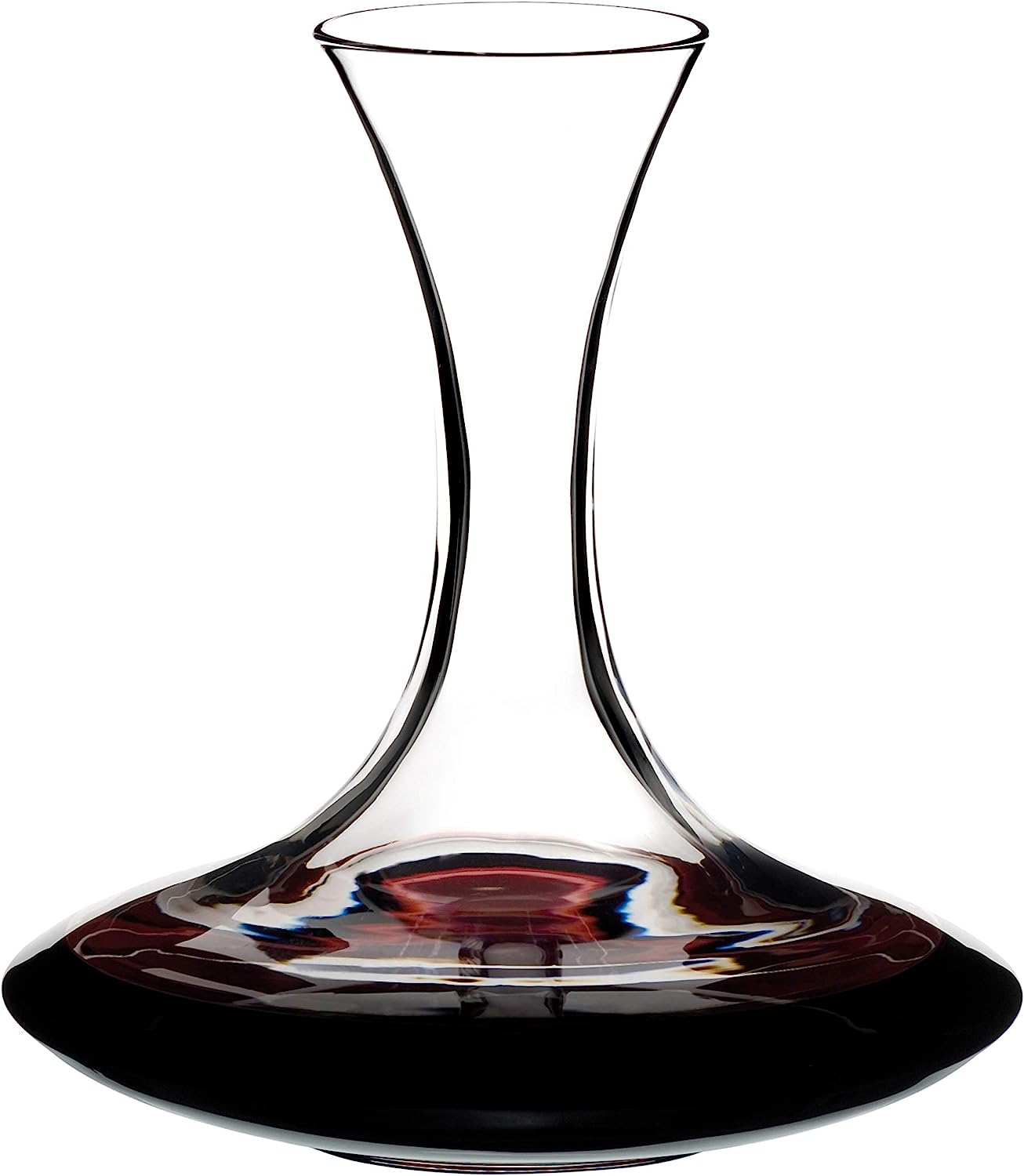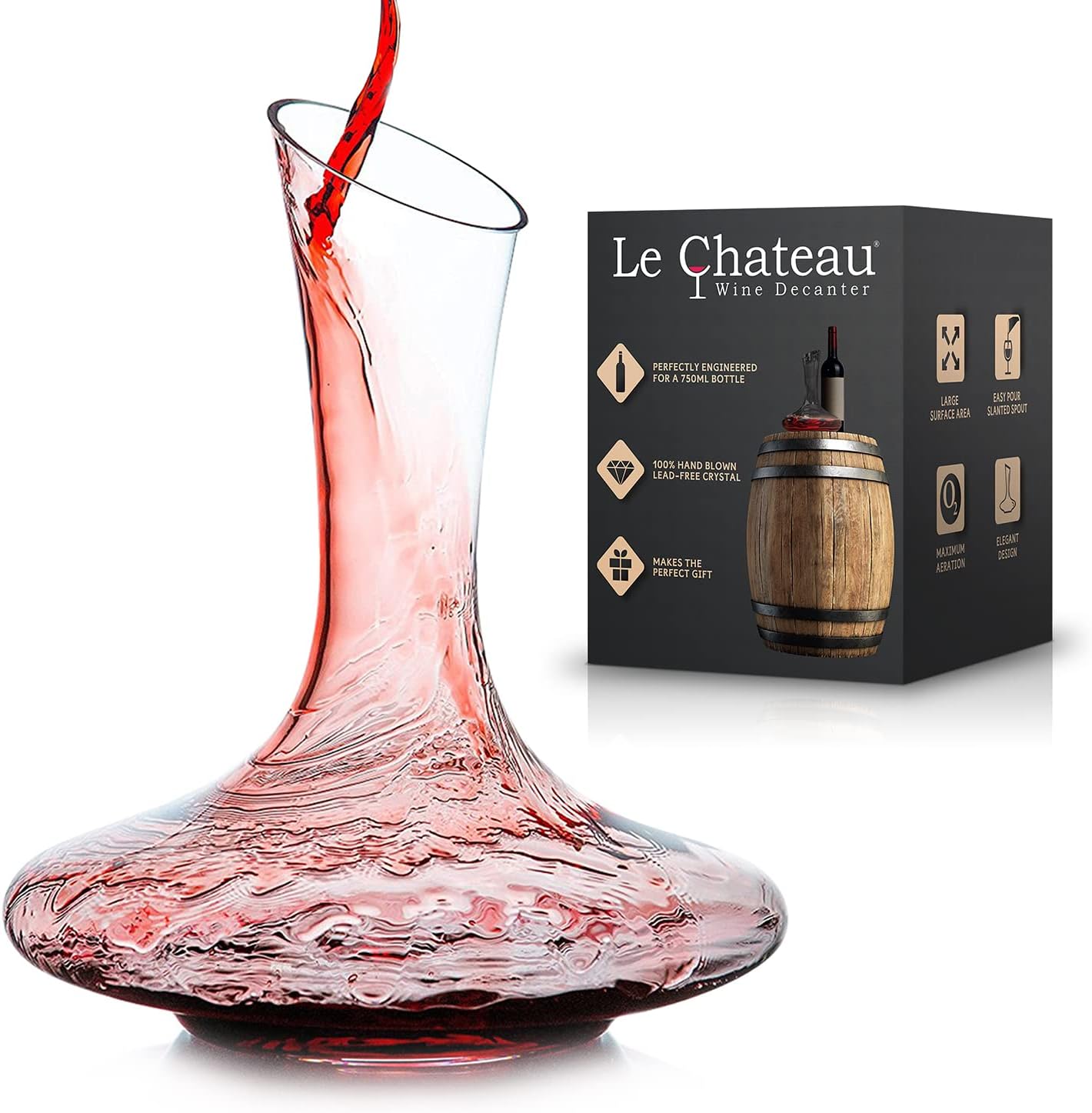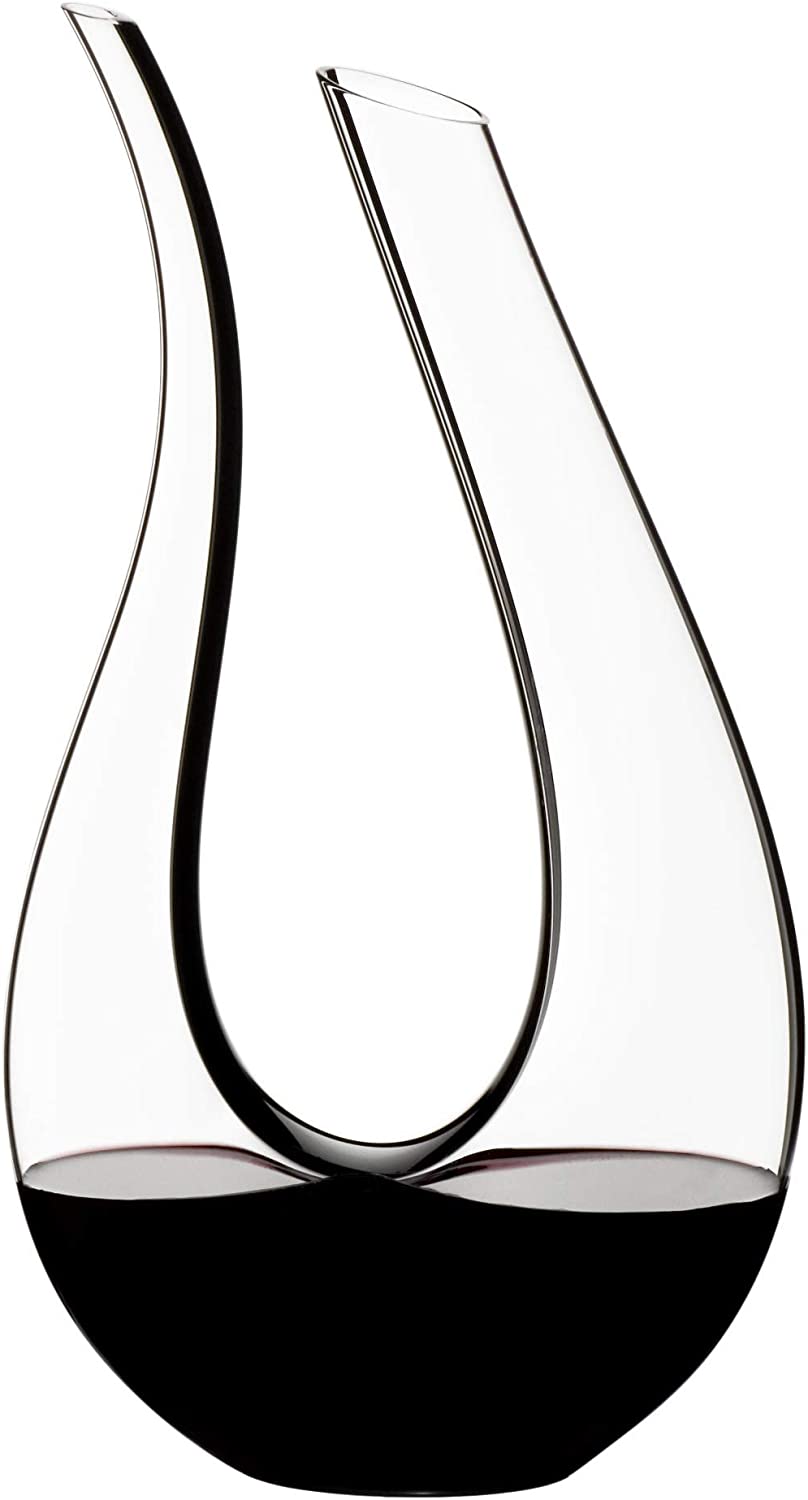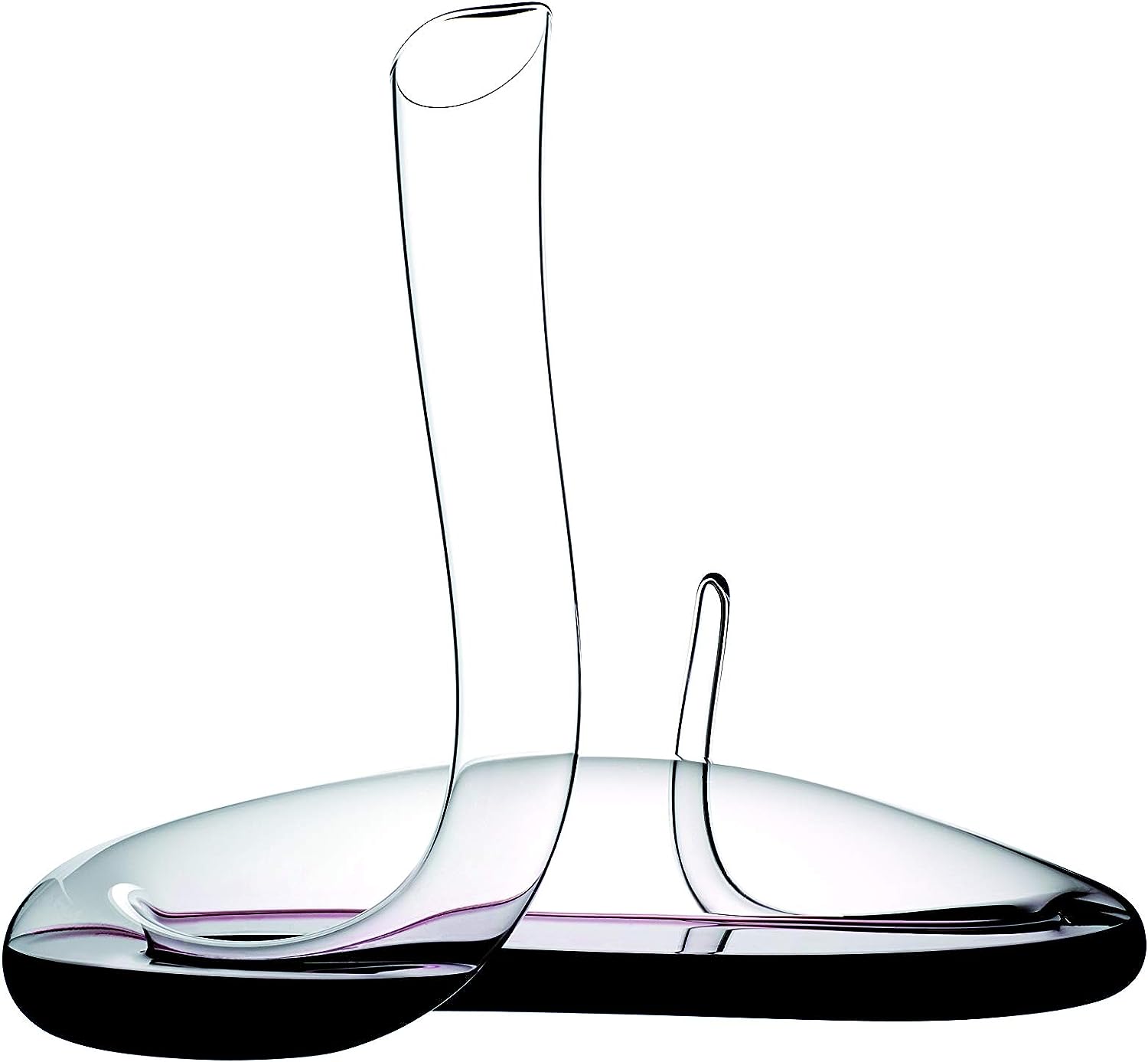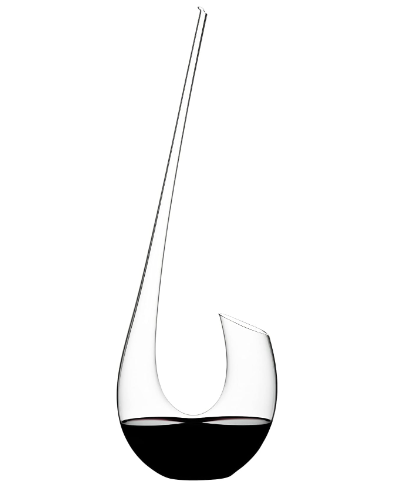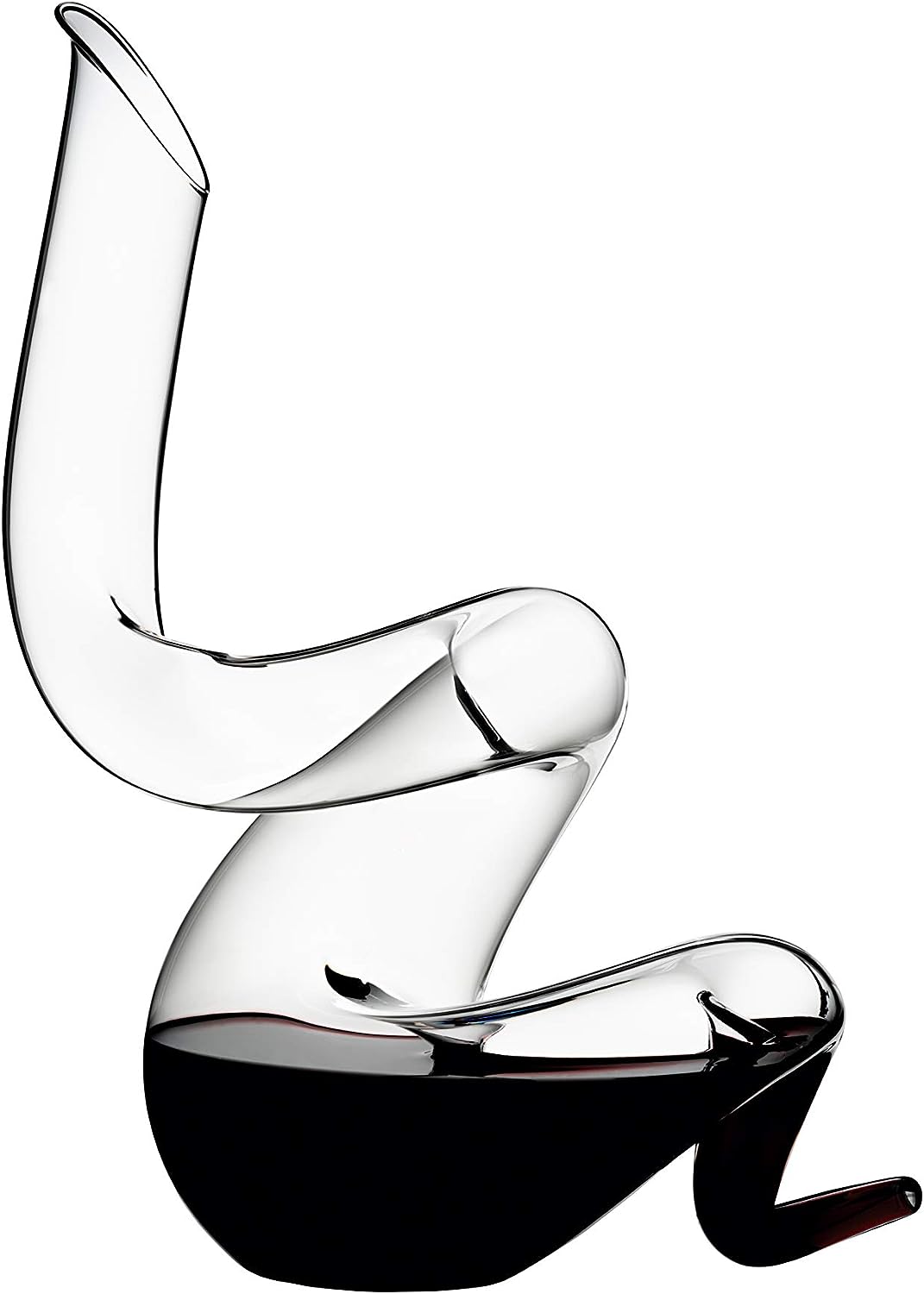How to Choose the Right Wine Decanter?
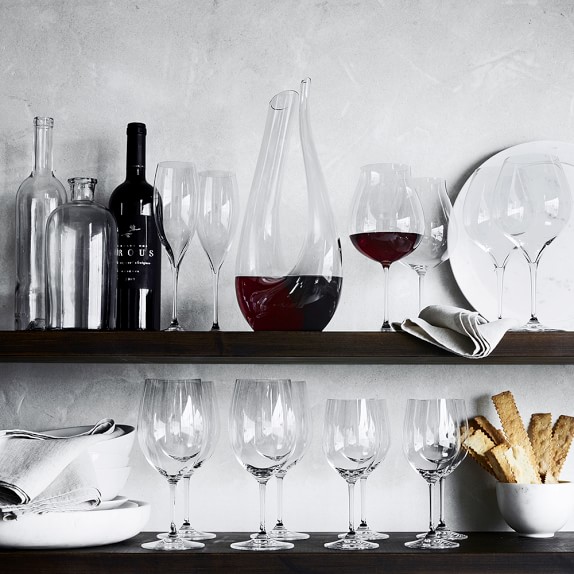
In the world of wine connoisseurs and enthusiasts, the ritual of decanting has long been held as a sacred practice that can elevate a simple bottle of wine into an unforgettable sensory experience. A wine decanter, a vessel designed with both aesthetic and functional considerations, plays a pivotal role in this process. Often overlooked, yet highly effective, a wine decanter is a tool that holds the power to transform the very essence of wine, enhancing its flavors, aromas, and presentation. This article explores the world of wine decanters, discussing their importance, different types, and providing guidance on choosing the ideal decanter for your specific needs.
What is a wine decanter?
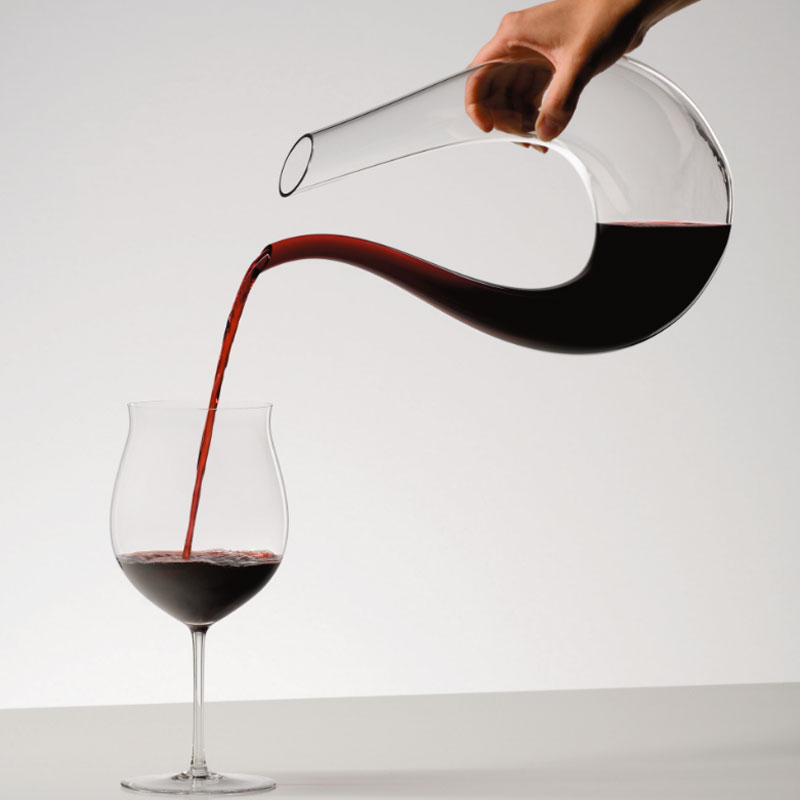
At its core, a wine decanter is a specialized vessel used to transfer wine from the bottle into a separate container before serving.
A wine decanter serves a dual purpose that transcends mere aesthetics. Primarily, it facilitates aeration – the process of exposing wine to air.
As wine ages, it undergoes complex chemical reactions that can lead to the formation of sediment and a tightening of flavors.
Aeration, achieved through decanting, opens up the wine, softens harsh tannins, and encourages the mingling of aromas, resulting in a more harmonious and expressive tasting experience.
Secondly, the decanter serves as a vessel to separate the wine from any sediment that might have formed over time.
This is particularly relevant for older wines, where sediment is more likely to be present. By gently transferring the wine into the decanter, the sediment remains in the original bottle, ensuring a clear and sediment-free pour.
What is wine decanting?
Decanting is the practice of transferring the wine from its original bottle to a separate vessel before serving. This process involves separating the wine from its sediment, which can accumulate in older wines, as well as allowing the wine to interact with the air to soften its tannins and enhance its aromatic qualities.
The act of wine decanting serves multiple purposes that contribute to the overall enjoyment of the wine:
- Aeration: One of the primary reasons for decanting is to expose the wine to oxygen. This aeration process helps the wine open up, allowing its flavors and aromas to fully develop and become more pronounced. As wine interacts with oxygen, its flavors and aromas open up, offering a more expressive and complex tasting experience. This is particularly beneficial for young, tannic red wines, as aeration helps mellow their harsh edges.
- Separation and sediment removal: Older wines, particularly reds, tend to develop sediment as they age. This sediment, composed of tannins and pigments, can cloud the wine and affect its taste. Decanting helps to separate the clear wine from these sediments, ensuring a smoother and more visually appealing pour.
- Enhanced aromas: Many wines, especially reds, are closed off initially, with their aromas subdued. Decanting exposes the wine to air, coaxing out its aromas and intensifying its bouquet.
- Presentation: Beyond its functional aspects, a beautifully designed wine decanter adds an element of sophistication and elegance to the wine service, enhancing the overall dining experience.
Science of aeration and flavor enhancement
The science behind decanting lies in the interaction between wine and oxygen. As wine is exposed to air, volatile compounds are released, causing the wine to “breathe.”
The aeration process softens tannins, which are responsible for the dry and sometimes bitter sensation in the mouth. Additionally, the mingling of aromas due to aeration enhances the complexity of the wine’s bouquet, making it more aromatic and enticing.
However, it’s essential to note that not all wines benefit from extensive aeration. Delicate and older wines can be overly exposed to oxygen, leading to the loss of their fragile nuances.
As such, a balance must be struck between aeration and preservation, depending on the wine’s age, varietal, and individual characteristics.
The historical significance of decanter
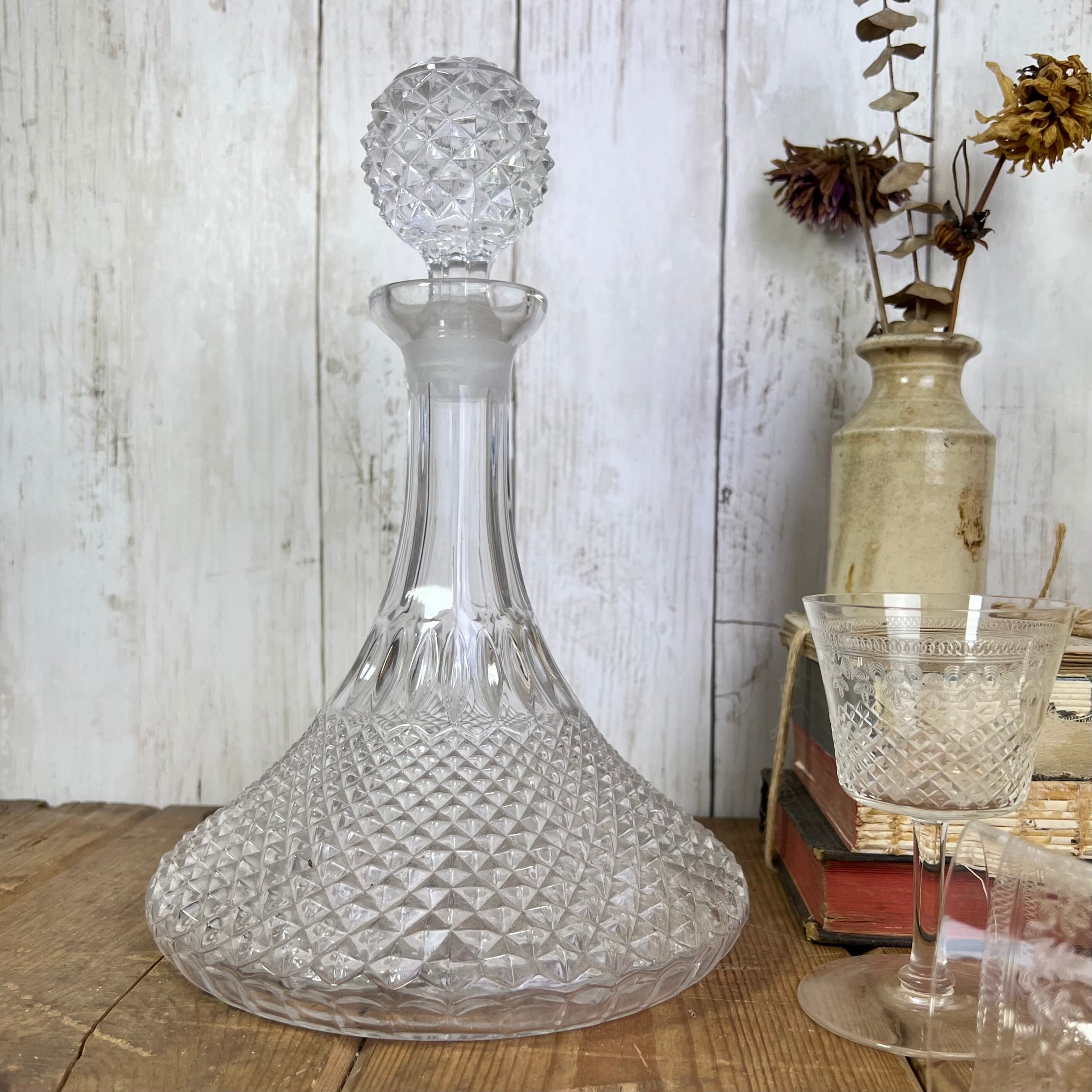
The history of the wine decanter traces back to ancient civilizations, where the art of decanting was embraced for its practicality as well as its symbolism of hospitality.
The origins of the wine decanter can be traced back to ancient civilizations such as the Greeks and Romans.
In ancient Rome, wine was decanted to separate impurities and to demonstrate generosity to guests. The practice evolved across cultures and centuries, each era adding a touch of sophistication to the decanting ritual.
During the Renaissance, decanters began taking on more ornate forms, reflecting the era’s emphasis on artistry and opulence. Craftsmen of the time produced glassware that showcased intricate designs, often incorporating elements of gold and enamel.
These decanters not only served functional purposes but also acted as status symbols, reflecting the owner’s wealth and taste.
Cut glass and crystal decanters became prized possessions, symbols of affluence and a refined lifestyle. Today, this tradition endures, with a wide array of decanter designs catering to both modern aesthetics and traditional elegance.
The contemporary revival and collectibility
In recent years, interest in traditional craftsmanship and artisanal objects has been resurgent.
This revival has extended to the world of wine decanters, with contemporary artisans and glassblowers creating unique pieces that pay homage to historical designs while incorporating modern sensibilities.
Collectors have also recognized the value of vintage decanters, viewing them not just as functional items but as pieces of art and history.
Antique decanters from renowned glasshouses like Baccarat and Lalique have become sought-after treasures, fetching impressive prices at auctions.
How to decant wine: step-by-step guide
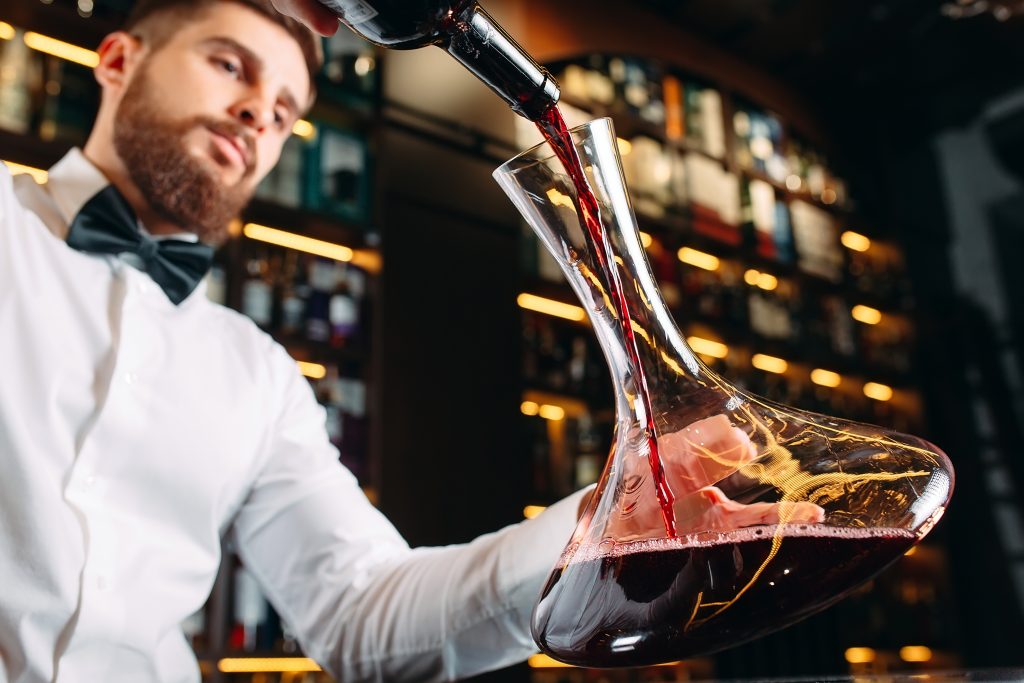
True wine connoisseurs understand the transformative power of decanting. This ritualistic process can elevate your wine tasting experience from good to extraordinary, bringing out the intricate flavors, aromas, and textures that lie hidden within the liquid.
Here is a step-by-step guide to decanting wine:
- Choose the right wine and decanter: Start by selecting the wine you want to decant. This is particularly valuable for red wines (and white wines), particularly those aged over five years or those known to have sediment. Choose a decanter with a wide base and a long neck, allowing ample surface area for aeration.
- Stand upright: If you’re dealing with an aged, vintage and archive bottle, let it stand upright for several hours or even a day before decanting. This helps the sediment settle at the bottom.
- Open the bottle: Gently remove the foil and the cork using Ah-So, Durand or Vacu Vin bottle opener for aged wines, being careful not to disturb any sediment present. Wipe the neck of the bottle to ensure a clean pour.
- Decanting process: Slowly pour the wine into the decanter, ensuring a steady and controlled flow. Stop pouring as soon as you notice sediment approaching the neck of the bottle.
- Aeration time: Allow the wine to rest in the decanter. Young wines may only require 15 to 30 minutes of aeration, while older ones might benefit from an hour or more.
- Pour and enjoy: Pour the wine into clean, appropriate wine glasses, and take in the enhanced aromas and flavors. Observe how the wine evolves as it comes in contact with air.
- Clean up: Rinse both the bottle and the decanter thoroughly to remove any leftover sediment or residue.
Best practices for decanting:
- Temperature matters: Serve wine at the recommended temperature before decanting. Red wines are generally served slightly below room temperature, while whites and rosés are cooler.
- Experimentation: Don’t be afraid to experiment with different aeration times. Some wines might require more air exposure to fully open up.
- Know your wine: Not all wines require decanting. Lighter wines, like delicate whites, might not benefit from the process and could lose their nuances.
- Gentle handling: Avoid vigorously shaking or swirling the wine during the decanting process, as this could disturb the wine and sediment leftovers.
Tips for cleaning decanter
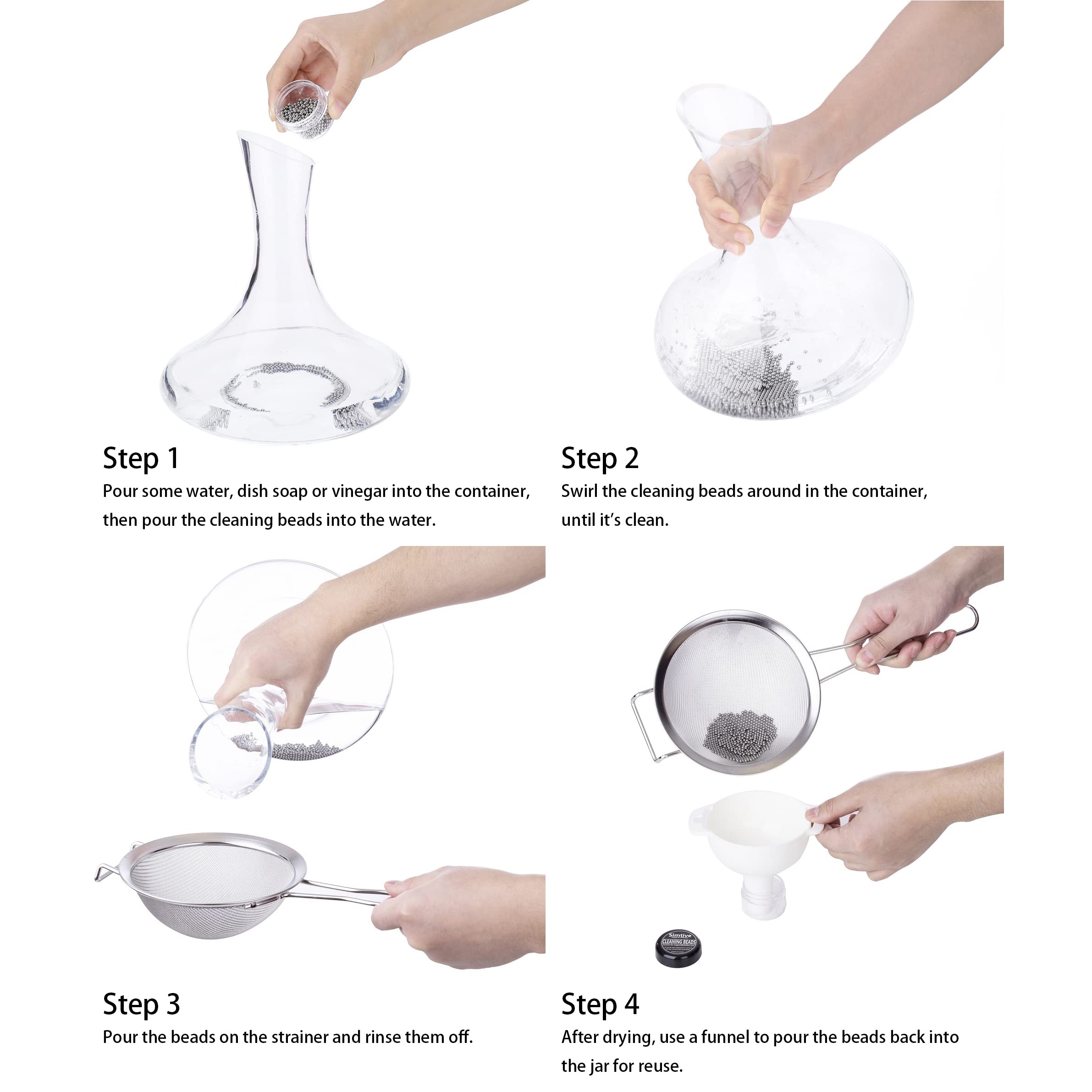
To effectively clean your wine decanter, you can follow several methods:
- Cleaning beads or brushes: Some decanter cleaning beads or brushes are available on the market and we strongly recommend to use those. These tools are designed to swirl around the decanter and remove stains and residue without scratching the glass.
- Salt or vinegar solution soak: Create a mixture of salt or vinegar and water, and let it soak in the decanter for a few hours. This helps to loosen and dissolve any wine residue or stains. After soaking, wash the decanter several times with glass washing liquid and water to remove the solution and residue. Finally, rinse thoroughly with warm water and allow it to dry upside down (not suitable for crystal or other delicate decanters).
- White vinegar soak: Fill the decanter with a solution of white vinegar and hot water, allowing it to sit for around 10 minutes. Vinegar’s acidity helps break down stains and residue. After soaking, rinse the decanter thoroughly with water to remove the vinegar smell (not suitable for crystal or other delicate decanters).
- Salt and ice cleaning: For relatively sturdy decanters, drop in a few pinches of coarse salt and some crushed ice. Give the decanter a gentle shake. The salt and ice work as an abrasive to scrub away any stains. Be cautious not to damage delicate decanters with this method (not suitable for crystal or other delicate decanters).
- Warm water soak: After using the decanter, fill it with lukewarm water and leave it to soak. The water softens stains and marks, making them easier to clean later. This is a gentle method for maintaining the decanter’s cleanliness.
How long to decant different types of wine?
The decanting time for different types of wine varies based on factors such as the style of the wine, its age, and the desired level of aeration.
Here’s a general guideline for how long to decant different types of wine:
- Red wines: Red wines generally benefit from decanting to soften tannins and allow the wine’s flavors to open up. Depending on the style and age of the red wine, decanting times can range from 20 minutes to 2 hours. Younger, more tannic reds like Cabernet Sauvignon and Syrah may benefit from longer decanting times, while lighter reds like Pinot Noir might only need around 20-30 minutes.
- White and rosé wines: While white and rosé wines don’t typically require as much decanting time as reds, they can still benefit from a brief aeration. Decanting times for white and rosé wines can be around 30 minutes, allowing the wines to open up and showcase their delicate aromas.
- Sparkling wines: Sparkling wines, like Champagne, can also benefit from decanting, although the process is different. Sparkling wines are often decanted for up to 30 minutes in order to release some of the carbonation and allow the flavors to develop. This can be especially beneficial for older sparkling wines.
- Older wines: When it comes to older wines, particularly those that are more than 20 years old, the decanting process should be gentler. Decanting times for these wines should be shorter, around 30 minutes or less, as extended exposure to air could cause the delicate flavors to dissipate.
- Natural wines and other styles: Natural wines and unique styles like orange wines might also benefit from decanting, but the ideal decanting time can vary widely. It’s recommended to start with shorter decanting times and adjust based on personal taste and experimentation.
Here is a table to showcase decanting different types of wine more precisely.
| Wine type | Wine examples | Decanting time | Decanter type |
| Light-bodied red wines | Pinot Noir, Beaujolais | 30 min. | Serve in a small to medium-sized decanter |
| Medium-bodied red wines | Merlot, Sangiovese, Barbera, Dolcetto | 30 min. – 1 hour | Medium-sized decanter |
| Full-bodied red wines | Cabernet Sauvignon, Plavac Mali, Syrah, Petite Sirah, Tannat, Monastrell, Tempranillo | 1 – 1:30 hours | Use a decanter with a wide-bottom base |
| Natural wines | especially biodynamic and organic ones | 30 min. | Use a decanter with a wide-bottom base |
| Older vintage wines | aged, archive wines (like these examples from Badel, Kutjevo, and Ilok Cellars winery) | These wines take the longest. Expect about 1–3 hours | Use a decanter with a wide-bottom base |
It’s important to note that these are general guidelines, and individual wines may vary. The decanting process can also be influenced by factors such as room temperature, altitude, and the specific characteristics of the wine.
To determine the best decanting time for a specific bottle of wine, it’s a good idea to start with the recommended times and adjust based on tasting preferences.
What is the difference between a wine decanter and a carafe?
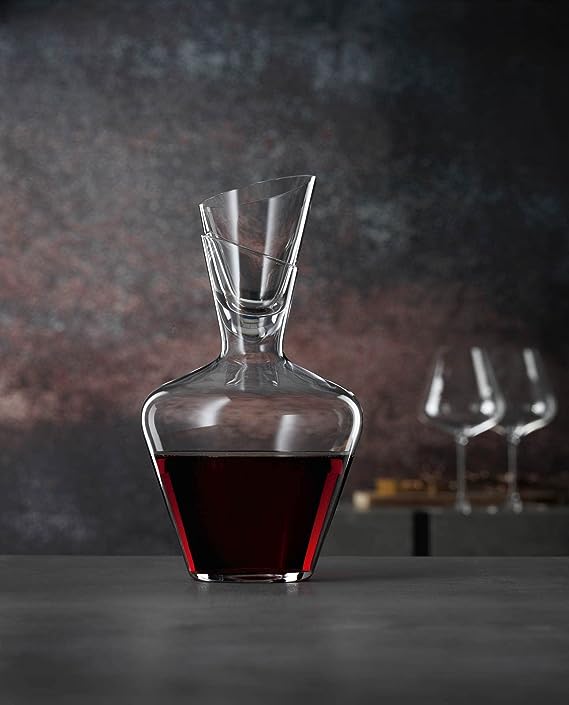
The key distinction between a wine decanter and a carafe lies in their shape, style, and intended purpose.
A carafe is an elongated vessel used for serving water, juice, and wine, while a decanter is specifically designed to aerate and oxygenate wine, particularly for special occasions.
- Carafe: A carafe typically has a long and straight body, making it well-suited for serving various beverages, including water, juice, and wine. Carafes are often used during everyday meals and are designed for easy pouring. They come in various sizes and styles, catering to different serving needs.
- Decanter: On the other hand, a decanter is characterized by its broader base and often bowl-shaped design with a tapered neck. The primary purpose of a decanter is to enhance the flavors and aromas of wine by allowing it to come into contact with the air, a process known as aeration. This is particularly useful for older wines or those with sediment, as the wine’s character can improve with exposure to oxygen.
It’s important to note that while carafes and decanters have distinct functions, the terminology can sometimes be used interchangeably in casual contexts.
However, understanding their intended purposes and designs can help you choose the right vessel for your specific needs, whether it’s serving beverages or enhancing the qualities of wine.
Tips for choosing the right wine decanter
Selecting the perfect wine decanter requires careful consideration of various factors, including the type of wine you’re serving, the design of the decanter, and your personal preferences.
Here’s a step-by-step guide to help you make an informed choice:
- Consider the wine type: Different wines benefit from different levels of aeration. For example, young red wines with robust tannins may require more aeration time, while delicate white wines might need less. Choose a decanter with a shape that complements the characteristics of the wine you intend to serve.
- Age of wine: The age of the wine plays a significant role in choosing the decanter. Young wines with robust tannins might require a wider decanter for increased exposure to air, while older wines might benefit from a more delicate pour.
- Shape matters: Decanters come in various shapes, each designed to enhance specific wine types. A wide-bottomed decanter with a large surface area is ideal for red wines, allowing ample exposure to air. Tall and slim decanters are often used for white wines and champagne.
- Material selection: Decanters are commonly made from glass or crystal. While glass decanters are more affordable and durable, crystal decanters are renowned for their aesthetic appeal and the way they refract light, enhancing the visual experience of the wine. Our recommendation is opt for high-quality materials like lead-free crystal or premium glass that ensure both durability and visual brilliance.
- Pay attention to design: Apart from functionality, the decanter’s design adds a touch of elegance to the overall presentation. Look for a design that resonates with your personal style and the ambiance of your dining area.
- Easy pour and cleaning: Opt for a decanter with a well-designed neck that allows easy pouring without drips. Also, consider how easy the decanter is to clean, as some intricate designs can be challenging to maintain.
- Size consideration: The size of the decanter matters. It should be able to hold a standard bottle of wine comfortably while leaving enough space for aeration. Larger capacities are suitable for entertaining, while smaller ones are great for intimate gatherings.
- Personal preference: Ultimately, your personal taste and preferences play a significant role. Choose a decanter that resonates with you and adds to the overall enjoyment of the wine-drinking experience.
Types of wine decanters
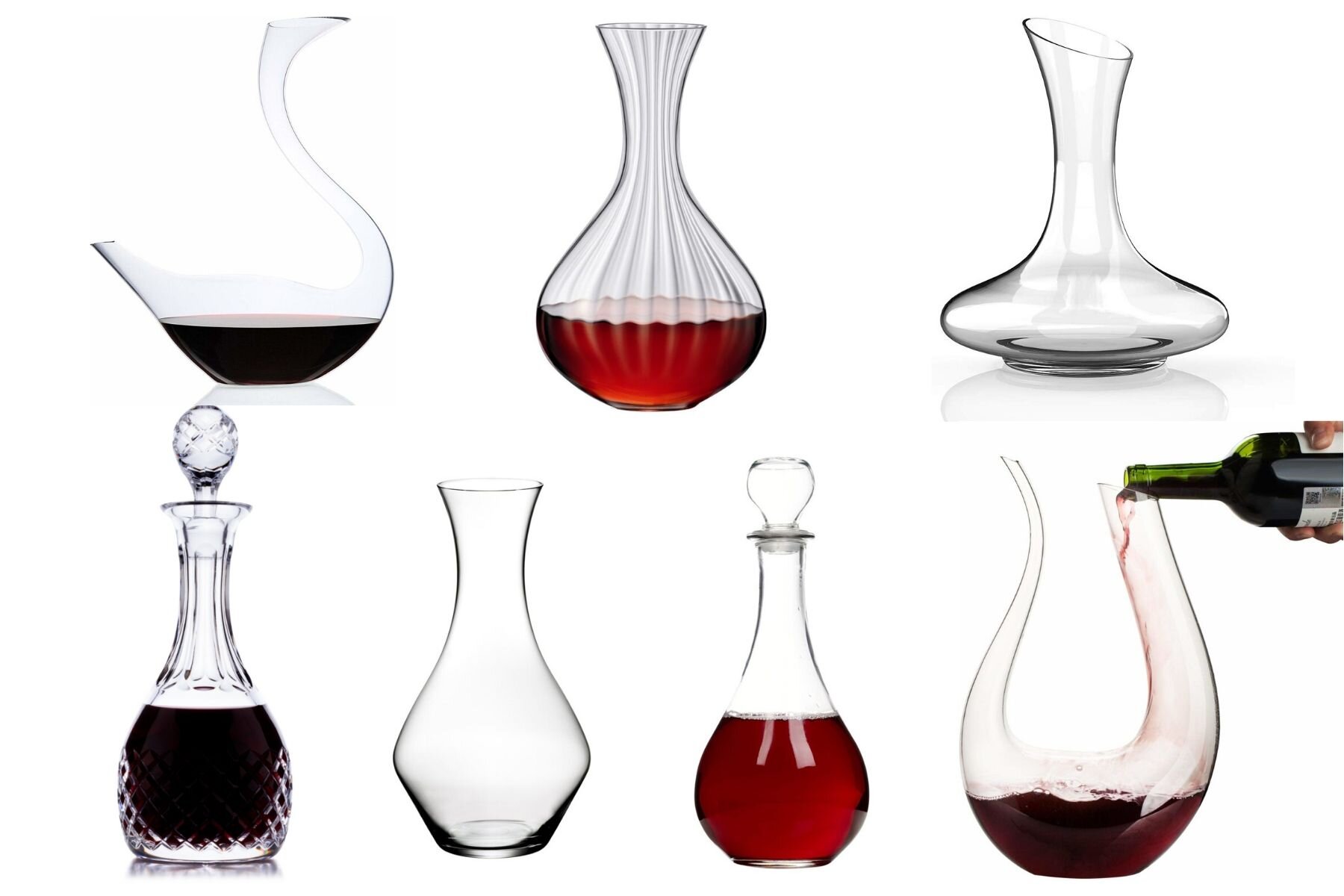
A diverse array of wine decanters is available, each tailored to specific wine types and preferences:
- Standard,
- Long-necked,
- Aerator,
- Wide-bottom,
- U-shaped,
- Crystal.
Standard decanters
Among the array of decanters available, standard wine decanters stand out as both functional and aesthetically pleasing vessels designed to coax the very best out of your favorite vintage.
These are versatile decanters suitable for a wide range of wines. They often feature a wide base and a slightly tapered neck, allowing for adequate aeration.
In the case of standard wine decanters, the design is simple yet elegant. These decanters often feature a wide base that tapers into a slender neck, offering ample surface area for the wine to interact with oxygen and release its full bouquet of flavors and aromas.
Standard wine decanters are not just utilitarian vessels; they are often meticulously crafted pieces that add a touch of sophistication to any table setting.
Craftsmen and designers understand the delicate balance between form and function, ensuring that these decanters not only enhance the wine but also the overall dining experience.
Long-necked decanter
Among the various types of decanters available, the long-necked decanter stands out as a symbol of sophistication and functionality, offering a unique blend of aesthetics and utility.
A long-necked decanter is a vessel designed with a distinctive elongated neck that tapers towards the opening, creating an elegant and striking silhouette.
This design not only adds an air of refinement to the decanting process but also serves a practical purpose.
With its elongated neck and slender body, this decanter excels at preserving delicate aromas in more mature wines.
The controlled pouring allows for a gradual release of flavors, making it ideal for older reds and complex whites.
The elongated neck provides a larger surface area for the wine to come into contact with the air, promoting a more effective aeration process.
As the wine cascades down the length of the neck, it is exposed to a controlled amount of oxygen, which works to unlock its hidden flavors and aromas, resulting in a more pleasurable and well-rounded tasting experience.
Aerator decanters
Aerator decanters, a blend of modern innovation and age-old practices, have revolutionized the way we experience and enjoy wine.
These decanters incorporate aeration mechanisms that accelerate the process of oxygenating the wine, making them ideal for impatient wine enthusiasts.
An aerator decanter is a sophisticated tool designed to accelerate the aeration process of wine, allowing it to breathe and develop its flavors to their utmost potential.
This device typically consists of a glass or crystal vessel with an intricate design that encourages the wine to come into contact with air, thereby promoting the oxidation of certain compounds present in the wine.
This process softens tannins and enhances aromas, resulting in a smoother, more flavorful wine.
Types of aerator decanters
Several types of aerator decanters are available, each catering to specific preferences and needs of wine enthusiasts:
- Traditional decanter with aerator: This type combines the functionality of a traditional decanter with an integrated aerator. The wine is poured into the decanter, which is designed to maximize aeration during the pouring process itself.
- Pour-through aerator: This compact and user-friendly aerator attaches directly to the wine bottle’s neck. As the wine flows through the aerator, it is exposed to air, enhancing its flavors and bouquet.
- Aerator stand: These are elegantly designed stands that hold the wine bottle at an angle, allowing the wine to stream down the sides of the decanter, effectively oxygenating the liquid.
- Electric aerator: Employing a motorized mechanism, electric aerator decanters facilitate rapid aeration by injecting air into the wine as it flows through the device.
- Instant aerator: A relatively newer innovation, instant aerators sit atop the wine glass and utilize aeration channels to infuse air into the wine as it is poured, ensuring each glass receives its own aeration.
Wide-bottom decanters
Among the array of decanter designs, the wide-bottom decanter has garnered significant attention for its unique attributes that promise to transform the way we savor our favorite beverages.
A wide-bottom decanter is a vessel designed with a distinctive, wide base that tapers upwards towards a narrower neck and opening. This design not only showcases an elegant silhouette but also serves a crucial functional purpose.
The broad base of the decanter increases the surface area of the liquid, allowing for greater aeration and exposure to oxygen.
This aeration process can significantly impact the flavors and aromas of wines and spirits, softening harsh tannins and opening up intricate layers of scents.
Perfect for young, bold red wines, these decanters offer maximum surface area for ample aeration, helping to soften tannins and bring out complex flavors
U-Shaped decanters
U-shaped decanters are a striking departure from the traditional designs that typically feature a slender neck and broad body. The hallmark of the U-shaped decanter is its distinctive silhouette, which often resembles the letter “U” or a horseshoe.
This design not only sets it apart aesthetically but also serves a practical purpose.
U-shaped decanters come in an array of designs, ranging from sleek and modern to intricate and ornate. This diversity allows individuals to select a decanter that complements their personal style.
Often used for mature wines that require less aeration, these decanters allow for gentle pouring and minimal disturbance of sediments.
Crystal decanters
In the world of fine dining and luxurious living, crystal decanters stand as timeless symbols of sophistication and refinement.
These exquisite vessels not only enhance the aesthetic appeal of beverages but also play a pivotal role in elevating the overall drinking experience.
Crafted from fine crystal, these decanters are exquisite works of art that enhance the presentation of the wine while allowing for effective aeration.
Crystal is made by adding minerals to the glass mixture, resulting in a more durable and radiant material. The lead content in crystal is particularly responsible for its brilliance, allowing it to be cut and polished to perfection.
Prior to using a crystal decanter, it’s essential to clean it thoroughly to remove any manufacturing residue.
Hand washing with lukewarm water and mild soap is recommended, followed by gentle drying with a lint-free cloth.
Avoid using abrasive materials that can scratch the surface.
Conclusion
A wine decanter is not merely a vessel; it’s a tool that can transform an ordinary wine into a memorable experience. By understanding the art of wine decanting and the nuances of choosing the right decanter, you can elevate your wine-drinking rituals to new heights.
Whether you’re hosting an intimate dinner party or indulging in a solo evening of relaxation, the right decanter can make all the difference, enhancing the flavors, aromas, and overall enjoyment of your favorite wines.
So, embrace the world of wine decanters, explore their diversity, and embark on a journey of refined wine appreciation that’s as rich as the wine history itself.
Our Expertise
Valentina Silovic is a sommelier and content creator with over a decade of experience in the wine industry.
For this article, she collaborated with Dario Drmac, a wine entrepreneur renowned for his innovative digital approach, and Nenad Trifunovic, an esteemed moderator, wine workshop educator, and dedicated advocate for wine-drinking culture.
Their combined experience and insights contribute significantly to the depth and authority of the content presented.
Want to meet the team, seek recommendations, and discover in-depth insights into our product testing and reviews? Click here now!

















